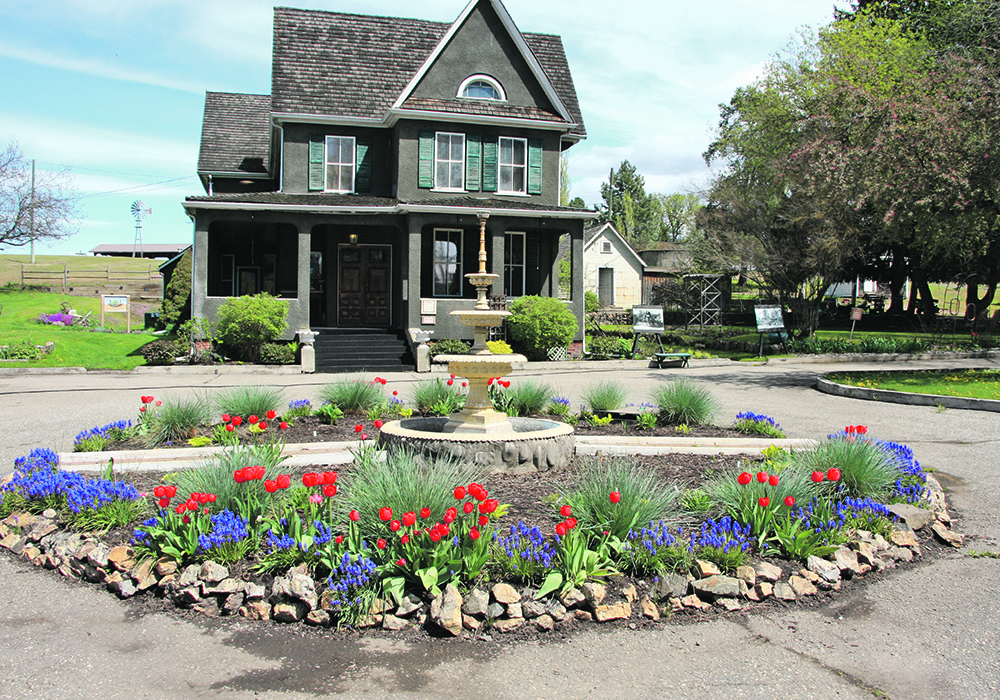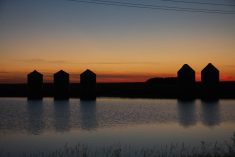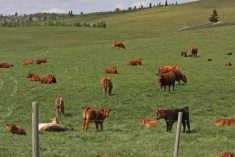The ranch, founded in 1867, reached about 12,000 acres by the mid-1890s, raising cattle and sheep and growing wheat
One of the earliest cattle enterprises in the Okanagan region of British Columbia, the O’Keefe Ranch, was founded in 1867 by Cornelius O’Keefe and his partner, Thomas Greenhow, at the north end of Okanagan Lake just north of Vernon.
O’Keefe was born in 1838, the seventh child of Michael and Ester O’Keefe who operated a farm near Ottawa.
When gold was discovered in the Cariboo region of north-central B.C., O’Keefe, 24, travelled west via the Isthmus of Panama in 1862. It was a long journey and by the time he got to the Cariboo, the excitement of the gold rush was almost over. As a result, he worked construction on the Cariboo Road, an ambitious building project through hazardous canyon territory leading from the south to Barkerville.
During the gold rush, there was a big demand for food to feed the miners. That inspired young men to buy beef cattle in Oregon and drive them north to the gold areas. More than 22,000 head of cattle crossed the border near Osooyos, B.C., from 1858 to 1868. These cattle travelled through the Okanagan Valley past Fort Kamloops and up to the Cariboo and eventually formed the base of the British Columbia cattle industry.
In 1866, O’Keefe met Thomas Wood, a native of Newfoundland, and together they drove cattle from Oregon. Later, an Englishman named Thomas Greenhow joined them and in June 1867, the three men arrived with their cattle at the head of Okanagan Lake. At that time, they each obtained 160 acres of bottom land, the maximum allowed by the colonial government.
O’Keefe and Greenhow remained in a partnership and operated a ranch and later they established a small store to service the native people and the few settlers in the north Okanagan area.
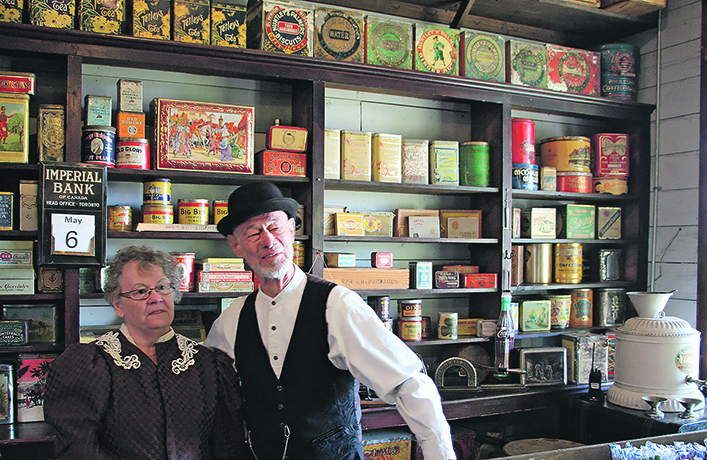
In 1872, their store became the first post office in the region and O’Keefe became the postmaster until 1912. The ranch was at the end of the wagon road into the Okanagan Valley and the site of the stage coach depot. Their post office became the final stop for the British Columbia stage coach line.
Times became tough for B.C. cattle producers with dwindling cattle markets during the 1870s. However, O’Keefe and Greenhow were able to build their cattle herd and bought additional land using the income from their store and post office.
By 1876, O’ Keefe owned 960 acres of prime Okanagan bottom land. The ranch later became a small, self-contained community, with the post office, a blacksmith shop, a grist mill, and its own church and cemetery.
A large shed was built in the 1870s to store supplies for the Okanagan General Store and travellers on the B.C. Express stage coach could spend the night in the upstairs area of the shed.
With the building of the Canadian Pacific Railway in the 1880s, economic activity increased, and O’Keefe and other ranchers sold beef and other goods to construction workers. With the completion of the railway, the ranchers in the area could then sell livestock to ranchers in coastal British Columbia and southern Alberta for the establishment of foundation herds.
Over the years, the Ranch grew as O’Keefe acquired unoccupied crown land for as cheap as $1 an acre. In the late 1800s, cattle grazed on the open range and thousands of them roamed the unfenced ranges of the Okanagan, Thompson, and Cariboo regions.
With his newfound wealth earned by supplying beef to CPR construction crews, O’Keefe started the first phase of constructing his house in 1886. It was considered an elegant house for the time and later it included hardwood floors, indoor plumbing and a hot water heating system.
By the mid-1890s, the O’Keefe Ranch had reached about 12,000 acres, where they raised cattle, sheep and had large acreages in wheat. However, expanding fruit orchards in the Okanagan Valley pressured the large cattle ranchers to sell their lands for settlement. The low beef markets in the late 1890s and the overgrazing of pasture lands brought the end of large-scale ranching in the Okanagan. O’Keefe was one of the last to sell most of his land.
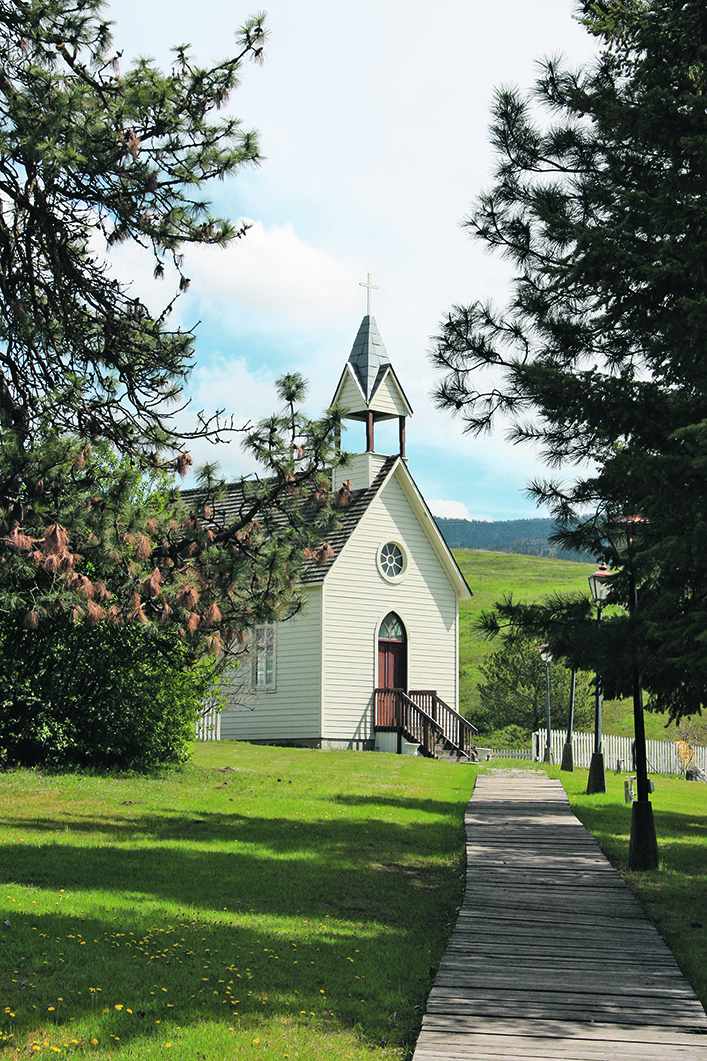
O’Keefe’s wife, Mary Ann, died in 1899, leaving him at the age of 63 with eight children to raise. He later remarried and the couple had three sons and three daughters; the last one was born when O’Keefe was 76.
In the 1900s, cowboys worked for $1-$2 a day and if they were not married, they lived together in bunkhouses. A cook’s house was built in the 1890s for the Chinese cooks employed by the O’Keefe family.
O’Keefe invested in town lots in Vernon after 1907 and built theaters in Vernon and Kamloops. He later served as a justice of the peace, a director of the B.C. Cattle Association, director on the Agricultural Society and president of the Vernon Jockey Club. In 1911, he was elected honorary president of the Vernon Conservative Association.
The O’Keefe family continued to operate the ranch on a smaller scale. After his death in 1919, his wife and later his son managed the ranch. By the mid-1960s, the family opened the ranch to the public as a local heritage site. They restored the remaining buildings and in June 1967, 100 years since the founding of the O’Keefe ranch, Premier W.A.C. Bennett officially opened the ranch to the public.

